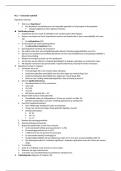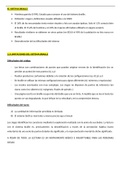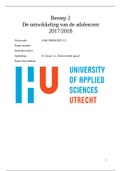Summary
Summary Topic 1
- Module
- Topic 1
- Institution
- PEARSON (PEARSON)
Transport of substances, water, blood vessels, heart and cardiac cycle, atherosclerosis, blood clotting, energy balance, carbohydrates, lipids, high and low density lipoproteins, treatment of CVD
[Show more]







